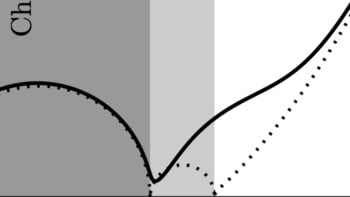The motion of a piece of paper or a leaf as it falls to the ground has fascinated physicists for many years. Maxwell, Helmholtz and Kelvin are just some who have studied this problem. And recent experiments by physicists in the US and Israel confirm that the motion of falling objects is still far from understood (A Belmonte et al . 1998 Phys. Rev. Lett . 81 345).
Andrew Belmonte of the University of Pittsburgh, and Hagai Eisenberg and Elisha Moses of the Weizmann Institute of Science in Israel dropped thin strips of plastic, brass and steel in various liquids and filmed their motion with a high-speed video camera. The liquids used by the team included water, petroleum ether and a 40:60 mixture of glycerol and water.
Two distinct types of motion were observed: fluttering from side to side and tumbling. The transition between these two types of motion was governed by the Froude number of the system – the ratio of the time taken for the strip to fall its own length to the time taken for it to move from side to side. Froude numbers date back to 1874 when they were used in the study of ships.
Belmonte and co-workers noticed that the strips tended to flutter for Froude numbers below 0.67 (± 0.05), and to tumble for higher values, sometimes changing the direction in which they tumble. For higher still Froude numbers the strips tumbled in one direction only. The team were able to show that the drag experienced by the strips, rather than the viscosity of the liquid, was the key factor in determining the Froude number and hence the motion of the strips. The next challenge is to study how the flow of the fluid around the strip and the vortices created by the movement of the strip influence the drag and therefore the motion.



